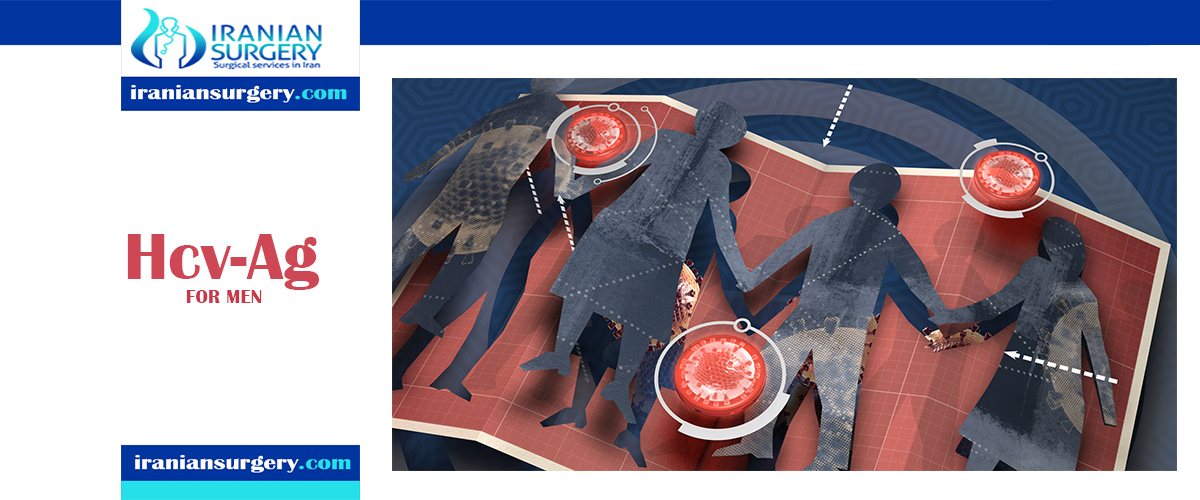HCV-Ag

Hepatitis C Testing
Also Known As: Hepatitis C Antibody/ Anti-HCV /HCV-PCR /HCV-RNA/ Hepatitis C Viral Load
Formal Name: Viral Hepatitis C Antibody Screen; Viral Hepatitis C RNA by PCR; Hepatitis C Virus Genotype
What is being tested?
Hepatitis C (HCV) is a virus that causes an infection of the liver that is characterized by liver inflammation and damage. Hepatitis C tests are a group of tests that are performed to detect, diagnose, and monitor the treatment of a hepatitis C viral infection. The most common test for HCV looks for antibodies in the blood that are produced in response to an HCV infection. Other tests detect the presence of viral RNA, the amount.
Common Questions
How is it used?
Hepatitis C tests are used to screen for and diagnose a hepatitis C virus (HCV) infection, to guide therapy and/or to monitor the treatment of an HCV infection.
An HCV antibody test is used to screen for past exposure and current infection. It detects the presence of antibodies to the virus, indicating exposure to HCV. This test cannot distinguish whether someone has an active or a previous HCV infection. There is some evidence that if the test is “weakly positive,” it may be a false positive. The Centers for Disease Control and Prevention (CDC) recommends that all positive antibody tests be followed by an HCV RNA test that detects viral RNA in the blood to determine whether or not the person has an active infection.
The HCV antibody test may be performed as part of an acute viral hepatitis panel to determine which of the most common hepatitis viruses is causing a person’s symptoms.
The following tests may be used to diagnose a current infection and to guide and monitor treatment:
- HCV RNA tests:
- HCV RNA test, Quantitative(HCV viral load) detects and measures the number of viral RNA particles in the blood. This test may be used to confirm the presence of the virus and diagnose an active infection. Viral load tests are also used before and during treatment to help determine response to therapy by comparing the amount of virus before and during treatment.
- HCV RNA, Qualitativeis used to distinguish between a current or past infection. It is reported as a “positive” or “detected” if any HCV viral RNA is found; otherwise, the report will be “negative” or “not detected.” This test is not frequently used any more.
- Viral genotyping is used to determine the kind, or genotype, of the HCV present to help guide treatment. There are 5 major types of HCV and more than 50 subtypes identified; the most common, genotype 1, accounts for about 75% of cases in the U.S. The drugs selected for treatment depend in part on the genotype of HCV infecting a person.
What does the test result mean?
An HCV antibody test is typically reported as “positive” or “negative.”
Results of HCV viral load testing are reported as a number if virus is present. If no virus is present or if the amount of virus is too low to detect, the result is often reported as “negative” or “not detected.”
Interpretation of the HCV screening and follow-up tests is shown in the table below. In general, if the HCV antibody test is positive, then the individual tested is infected or has likely been infected at some time with hepatitis C. If the HCV RNA test is positive, then the person has a current infection. If no HCV viral RNA is detected, then the person either does not have an active infection or the virus is present in very low numbers.
| HCV Antibody | HCV RNA | HCV Infection |
| Negative | No infection or too early after exposure for the test to be accurate; if suspicion remains high, retesting at a later time may be required. | |
| Positive or Indeterminate | Negative | Past infection or no infection (
false-positive screen); additional testing if indicated |
| Positive or Weak or Indeterminate | Positive | Current infection |
For monitoring purposes, an HCV viral load (HCV RNA quantitative) can indicate whether or not treatment is effective. A high or increasing viral load may be a sign that treatment is not successful whereas a low, decreasing, or undetectable viral load may imply that the treatment is working.
Successful treatment causes a decrease of 99% or more in viral load soon after starting treatment (as early as 2-4 weeks) and usually leads to undetectable viral load after treatment is completed. According to guidelines from the American Association for the Study of Liver Diseases and the Infectious Disease Society of America, an undetectable viral load in a treated person’s blood 12 weeks after the end of the treatment means that the HCV infection has responded to therapy.
The results of the HCV genotype test identifies which strain of HCV the person has and helps guide the selection and the length of treatment. Treatments may differ depending on a variety of factors, including HCV genotype and the health of the person’s liver.


